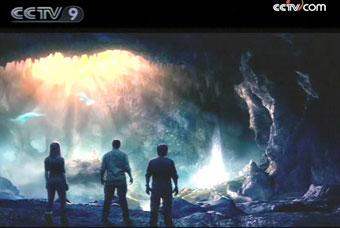Its history can be traced back to early experiments in the 1890s, but the stereoscopic era of motion pictures has witnessed a new trend in recent years, with 3D imagery exploding into film, broadcast and print markets. Disney's latest 3D animation about a super dog named "Bolt" will premiere in Beijing shortly. In today's spotlight, let's check out the technology that's been revolutionizing cinemas the world over.

3D film "Journey to the Center of the Earth" was released worldwide in July this year. It's screened using Read D Cinema technology, a format that made its debut with "Chicken Little" in 2005. Almost 60 percent of the film's take at the box office came from theaters that showed the film in 3D.
Unlike the old red and blue anaglyph, the new technology uses polarized lenses and a specially-coated screen to allow viewers to see sharp, full colors and distinguish between separate images.
In these movies, audiences are given a viewing device, usually a pair of special glasses, that make it seem as if the characters are leaping out of the screen at them. The stunning visuals often outshine less-than-stellar storylines and ensure moviegoers keep coming to the theaters.
The box office performance of "Journey to the Center of the Earth" is a case in point. It's grossed 25 million yuan at 86 screens around China. The film screens in conjunction with "Painted Skin", a movie by Hong Kong director Gordon Chan. "Painted Skin" grossed 200 million yuan from 3000 screens, giving "Journey to the Center of the Earth" a far higher take per screen.